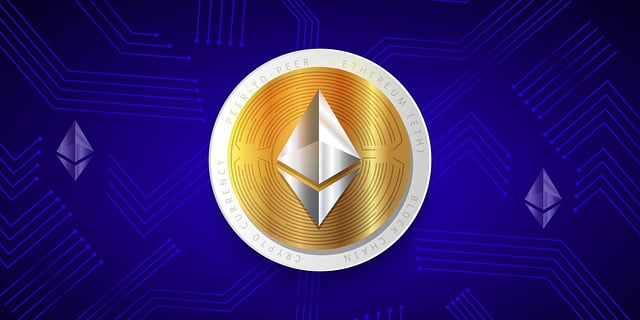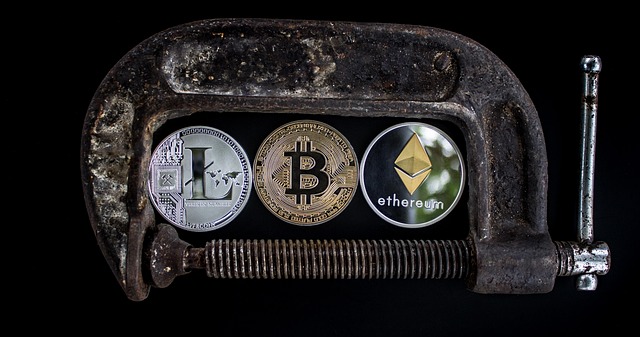
Ethereum, as a pioneering blockchain platform, employs deflationary mechanisms that significantly shape its economic environment. This is primarily achieved through token supply dynamics, such as burning tokens (like ETH) from transaction fees, mimicking traditional deflationary models. Smart contracts facilitate the creation of deflationary digital assets and tokens with programmed rules for gradual supply reduction or responses to external factors. This has led to a surge in decentralized applications (dApps) and token projects adopting deflationary models. Understanding these mechanisms is crucial for Ethereum holders evaluating the long-term viability and potential growth of their investments within this dynamic ecosystem, balancing supply and demand to stabilize the network's economy.
“Unveiling the Economics of Deflation on Ethereum: A Comprehensive Guide for Holders. Ethereum, a pioneering blockchain, has implemented unique deflationary mechanics that significantly impact its economic landscape. This article delves into how deflation affects ETH holders, exploring benefits like decreased token supply and potential value appreciation, while also highlighting risks such as market volatility. We examine the key mechanisms driving deflation, including burning and fee-based models, and offer strategic insights for navigating this environment, from long-term holding to DeFi participation.”
- Understanding Deflationary Mechanics on Ethereum
- – Definition of deflation and its impact on cryptocurrencies
- – Ethereum's unique approach to deflation through tokenomics
- How Does Deflation Affect Ethereum Holders?
Understanding Deflationary Mechanics on Ethereum

Ethereum, as a leading blockchain platform, has implemented deflationary mechanics that significantly impact its economic landscape. At its core, deflation refers to a decrease in the general price level of goods and services over time, which, in the context of Ethereum, is primarily driven by token supply dynamics. One key mechanism is the burning of tokens, where a portion of transactions fees are destroyed, reducing the total supply of ETH. This process mimics traditional deflationary economic models, where scarcity increases value.
Moreover, Ethereum’s smart contracts enable the creation of deflationary digital assets and tokens. These can be programmed to follow specific rules, such as decreasing in supply over time or based on external factors. This has led to a surge in decentralized applications (dApps) and token projects that employ deflationary models to incentivize usage and investment. Understanding these mechanics is crucial for Ethereum holders, as it influences the long-term viability and potential appreciation of their holdings in this rapidly evolving ecosystem.
– Definition of deflation and its impact on cryptocurrencies

Deflation, in economic terms, refers to a general decrease in price levels and the value of money over time. In the context of cryptocurrencies like Ethereum (ETH), deflation can have significant implications for holders. Unlike traditional fiat currencies that experience inflation, leading to an increase in their monetary supply and potential devaluation, Ethereum’s native token operates on a different principle.
When ETH is burned or removed from circulation through various mechanisms, such as gas fees or specific smart contract interactions, it creates a deflationary pressure within the network. This reduction in supply can have several effects on the cryptocurrency market and its investors. It often leads to increased scarcity, which, in turn, may drive up the price of Ethereum, potentially offering substantial gains for long-term holders. Additionally, deflationary dynamics can encourage more mindful spending and investment strategies within the crypto ecosystem.
– Ethereum's unique approach to deflation through tokenomics

Ethereum takes a unique approach to deflation through its tokenomics, which plays a crucial role in shaping its economic landscape. Unlike many cryptocurrencies that aim for inflationary pressures, Ethereum’s smart contract functionality enables dynamic adjustments to supply and demand, fostering a balanced ecosystem. The network’s ability to burn tokens associated with transaction fees creates an automatic reduction in circulation, contributing to deflationary mechanics.
This tokenomic design has significant implications for holders. As the supply of Ether (ETH) decreases over time, its value is expected to appreciate, providing potential long-term gains for investors. Additionally, the deflationary nature of Ethereum incentivizes thoughtful spending and investment strategies among users, further stabilizing the network’s economy.
How Does Deflation Affect Ethereum Holders?

Deflation, characterized by a decrease in the general price level of goods and services, has unique implications for Ethereum holders. In the context of cryptocurrencies, deflation can manifest through reduced mining rewards, decreased transaction fees, or increased token burning mechanisms designed to control supply. For Ethereum holders, this translates into potential long-term gains if they hold their tokens during periods of deflationary pressure. As the supply of Ethereum decreases due to various deflationary mechanics, such as EIP-1559’s fee burning mechanism, the existing supply becomes scarcer relative to demand. This dynamic can drive up token prices over time, rewarding early holders who stayed committed to their holdings.
However, deflation can also introduce volatility and uncertainty in the short term. During periods of severe deflation, investors might prefer to sell their Ethereum for more stable assets, leading to a potential drop in token prices. Additionally, changes in mining rewards and energy costs associated with proof-of-work consensus mechanisms could impact the profitability of Ethereum staking. Therefore, while deflationary mechanics on Ethereum offer promising economic prospects for long-term holders, they also require careful navigation through volatile market conditions.
Ethereum’s implementation of deflationary mechanics offers a unique economic landscape for holders. By controlling supply and incentivizing participation, Ethereum ensures its token remains valuable over time. This benefits long-term holders, fostering a robust ecosystem that drives innovation and adoption. As the dynamics of deflation play out, Ethereum positions itself as a resilient and forward-thinking force within the cryptocurrency market.






